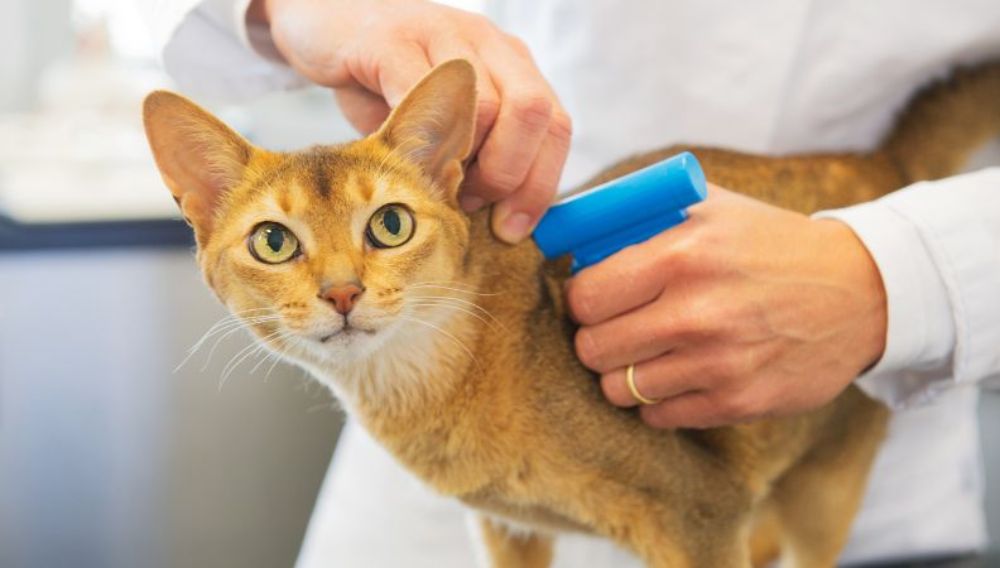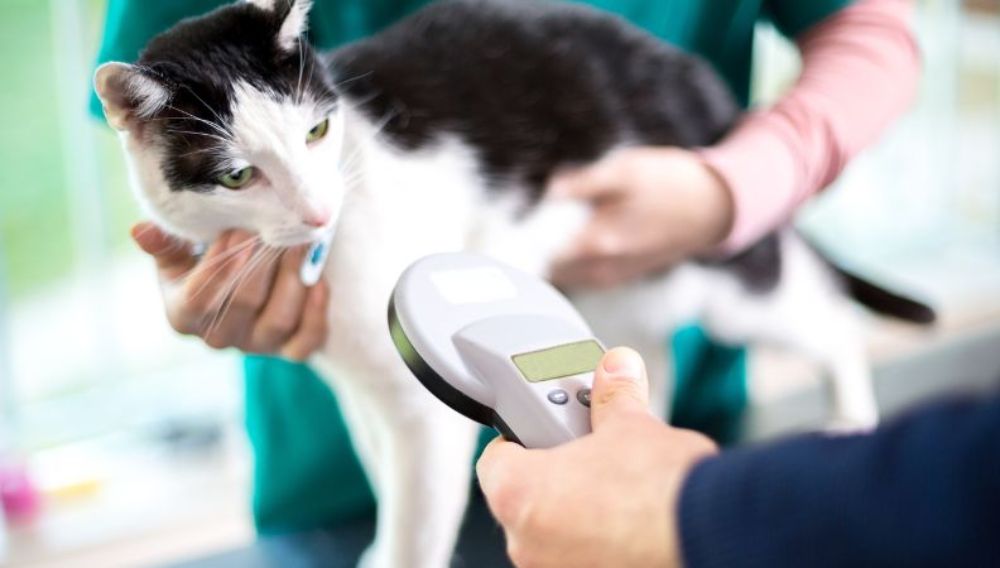
Lost pets are a big issue in many countries, with animal shelters taking in millions of stray animals every year. For many years collars with tags or ear tattoos have been used on cats for identification purposes, but they’re not as reliable as microchips.
They can be lost or tampered with, making it difficult to reunite the pet with its owner. So, now the UK Government are stepping in.
Dog microchipping has been compulsory since 2016, it’s only ever been an option to get a microchip for cat. As of March 2023 that’s all changed, as new legislation was put in place to make cat microchipping compulsory.
Do Cats have to be Microchipped?
Compulsory cat microchipping is being introduced. This is part of the Action Plan for Animal Welfare pledge, a pledge that aims to make it easier for lost or stolen pets to be reunited with their owners.
The new plan means that all cats must be microchipped by the time they reach the age of 20 weeks, otherwise cat owners will face a fine of up to £500.
If you already own a cat, you have until 10th June 2024 to have them microchipped. If you don’t, and it’s discovered after 10th June 2024, you’ll have 21 days to get a cat microchip implanted or may face the fine of up to £500.
The owner’s contact details will be stored and kept up to date in a pet microchipping database. If the details are incorrect, the owner could face a fine. If your cat has not yet been microchipped, you will need to get it done before this date to avoid the fine. Contact your veterinary practice to book an appointment.
What is a Microchip?
A pet microchip is a small tube that contains a 15-digit identification code, which is stored on a national microchipping database. The number should also be noted down by the owner and the veterinary practice that regularly sees the cat.
When a pet is found, a scanner can be passed over their body, sending out a magnetic field to pick up the unique code. When the code has been retrieved, the veterinary practice will contact the microchipping database, providing them with the code, to find out the owner’s contact details.
If your phone number or address changes, you’ll need to contact the database company with the microchip code that has been assigned to your pet so they can update your details. Microchips are a fast and effective way to find and contact the owners of a lost cat. They can also be a welcome safety net if you're travelling with your cat and they get lost.
How is a Microchip Inserted?
Microchips are injected under the skin using a wide-bore, sterile needle. The chip is similar in size to a grain of rice and doesn’t contain a power source, so is unlikely to be rejected by the pet’s body. The procedure should be done by a vet, vet nurse or other suitably trained person.
If the pet experiences any pain it will be minor and short-lived, so there’s no need for any painkillers or anaesthetic. The chip is inserted into the base of the neck (scruff), but it may move away from the original site over time - this isn’t a problem as the chip can be read by a scanner anywhere in the pet’s body.
Microchipping a cat is a quick procedure that can be done during a normal veterinary health check appointment, or when they’re under anaesthetic for another procedure like neutering.
What are the Benefits of Cat Microchipping?

Microchips for cats are safe with very few risks, they’re quick and easy to implant and are routinely done. Unlike collars and ID tags, microchips can’t fall off or be tampered with, and they don’t put your cat at risk of injury if the collar gets caught on something. They are the most effective way for your pet to be found and returned to you if they are lost or stolen.
Microchips can also be used to control a pet door, so you don’t get unwanted visitors in your home. Microchip cat flaps have sensors that can recognise any microchip code that is programmed into it. This means the door will open when your pet approaches it but remain closed for any other animal that tries to get in.
There are also pet feeders that work in a similar way, the cover to the food bowl will only open when the programmed microchip is nearby. This is beneficial to multi-pet households to prevent overeating or for any pet that needs a special diet or medication in their food.
How Much Does it Cost?
The cost of microchipping cats can vary from practice to practice but will be around £20-£30. Some reputable cat organisations and charities may be able to offer a reduced rate.
The contact details you provide at the time of insertion will remain on the microchipping database until you change them. There may be a small fee for first changes, but further updates are normally free. If you adopt a cat, the cat microchip cost is usually included in the adoption fee.
Are there Risks to Microchipping Cats
Microchips are safe, easy to implant and a very effective form of identification, but there are some small risks. Poor implantation techniques can cause injuries so only vets or suitably trained people should microchip your pet.
The insertion site may bleed slightly but this is uncommon. The needle and chip are sterile but there’s a very slight risk of infection, this can easily be treated though. If the chip moves from its original site to somewhere else in the pet’s body, it’s unlikely to cause any problems.
There have been some documented cases of tumours that were associated with microchips, but the risk of this is very low and shouldn’t stop you from getting your cat microchipped.
Remember, the UK cat microchip law is changing. From June 2024 it will be compulsory to have your cat microchipped. There are very few risks and problems associated with microchipping, and it is worth getting it done sooner rather than later. The pros definitely outweigh the cons when compared to the number of lost and stolen pets that can be easily reunited with their owners.
The cost of microchipping a cat is relatively low, they’re effective, easy to implant, and insertion is mostly painless or short-lived. Speak to your vet if you have any concerns, and get your cat booked in for their microchip soon!
Everypaw Cat Insurance
Everypaw's Cat Insurance comes with 24/7 unlimited access to vets and vet nurses that can help with your pet's health, care, nutrition and behaviour. So you can rest assured your kitty will be well looked after.
Content provided from Vetstream's Vetlexicon Felis - www.vetlexicon.com/treat/felis
Vetlexicon is the world’s largest peer-reviewed online clinical reference source. All our content is written and peer-reviewed by over 1,000 of the world’s leading veterinarians, ensuring relevance, accuracy and quality.
- Vetstream Ltd, Jones C, Youens E & Mossor B (online) Microchipping – Permanent identification of your cat. In: Vetlexicon Felis. Vetstream Ltd, UK. Website: https://www.vetlexicon.com/treat/felis/client-information/microchipping-permanent-identification-of-your-cat
- Jones C (online) Microchip implantation. In: Vetlexicon Felis. Vetstream Ltd, UK. Website: https://www.vetlexicon.com/treat/felis/technique/microchip-implantation